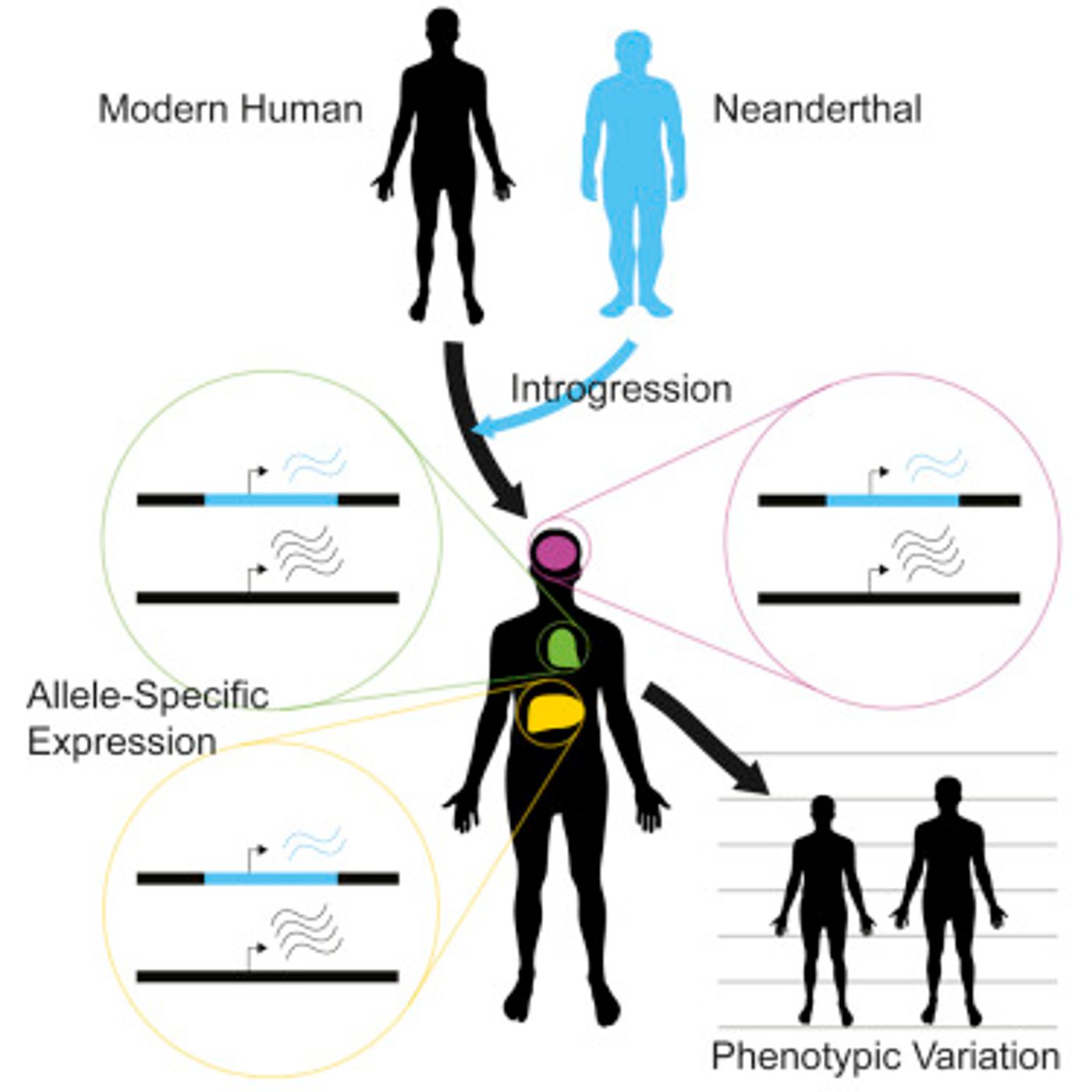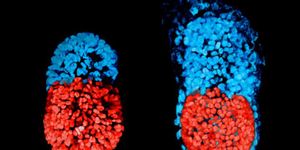The Impact of Neanderthal DNA on Human Gene Expression
Neanderthals died off 40,000 years ago, but not before passing on some of their genes to humans, who have in turn carried them forward. It's not clear how much influence they might have had on human genes, but new work has provided some insight. Reporting in Cell, investigators have found evidence to support the idea that neanderthal genes are impacting gene expression, and that it may be having an effect on characteristics such as height, or the risk of developing health issues like schizophrenia or lupus. The video below discusses the research.
"Even 50,000 years after the last human-Neanderthal mating, we can still see measurable impacts on gene expression," explained study co-author Joshua Akey a geneticist at the University of Washington School of Medicine. "And those variations in gene expression contribute to human phenotypic variation and disease susceptibility."
Previous work has linked Neanderthal genes to various traits including depression, fat metabolism and risk for lupus, but there has not been any indication of the exact nature of the relationship. The lack of RNA, the genetic intermediary that cells transcribe from DNA, has severely limited the ability of scientists to understand how Neanderthal genes may have functioned. Instead researchers have to study the Neanderthal sequences carried by modern humans.
The scientists wanted to look at RNA for this research; they assayed a dataset called the Genotype-Tissue Expression (GTEx) Project to find human genomes with both Neanderthal and modern human versions of any particular gene. A direct comparison of the gene sets by using 52 different tissues as an expression model. There was indeed a difference between the different versions of the genes in many cases.
"We find that for about 25% of all those sites that we tested, we can detect a difference in expression between the Neanderthal allele and the modern human allele," explained the first author of the report, Rajiv McCoy, a UW postdoctoral researcher.
There were especially low levels of Neanderthal genes being expressed in the brain and testes. It's possible therefore that those tissues underwent a more rapid evolution since our divergence from Neanderthals around 700,000 years ago. "We can infer that maybe the greatest differences in gene regulation exist in the brain and testes between modern humans and Neanderthals," said Akey.
The research has indicated that the Neanderthal version or allele of the ADAMTSL3 gene s\is one that both affect height and lowers the risk of schizophrenia. "Previous work by others had already suggested that this allele affects alternative splicing. Our results support this molecular model, while also revealing that the causal mutation was inherited from Neanderthals," said McCoy.
After DNA is transcribed into RNA, various modifications and edits can be made to the molecule by the cell. One such modification is alternative splicing, different ways to dice up the RNA; if a Neanderthal mutation is in the genome, the cell edits out a portion of the RNA that normally remains in the modern, human transcript. As such, the protein made from that RNA is changed, all due to the Neanderthal contribution to the genome. There is still much more work to be done before this mechanism is conclusively called causative for the changes in height or other characteristics, but this is a solid piece of preliminary evidence.
"Hybridization between modern humans and Neanderthals increased genomic complexity," explained Akey. "Hybridization wasn't just something that happened 50,000 years ago that we don't have to worry about anymore. Those little bits and pieces, our Neanderthal relics, are influencing gene expression in pervasive and important ways."
Sources: ScienceDaily via Cell Press, Cell









